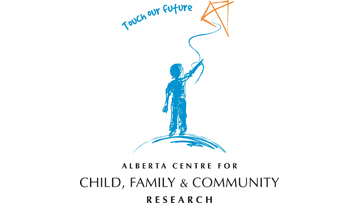Mental health issues, which include a wide range of conditions, often have their roots in early childhood. This topic brings together various articles and topics related to the mental health of mothers and children so as to provide a better understanding of the effects of mental health on young children’s psychosocial development.
Synthesis PDF Complete topic PDFSynthesis
How important is it?
Research now shows that mental health issues often have their roots in early childhood. Mental disorders include a wide range of conditions, such as depression, anxiety, phobias, substance abuse, schizophrenia, and developmental disorders such as disruptive behaviour, autism, mental retardation and dementia. About 10% of the adult population worldwide will report having some type of mental or behavioural disorder at any point in time.1 in 2003, 7% of the Canadian adult population was diagnosed with a mental illness, representing nearly 1.9 million people, and 6%, or 1.6 million people, was suffering from a non-diagnosed mental illness.2
The economic impact is huge. In a 2002 report, Health Canada estimated the direct costs related to the use of public health services at $4.7 billion in 1998, and indirect costs related to the loss of productivity resulting from long or shortterm absences from work or premature deaths at $3.2 billion.2 These stupendous figures are not specific to Canada: of the 10 leading causes of disability worldwide, five are mental disorders: unipolar depression, alcohol use disorder, bipolar affective disorder, schizophrenia and obsessivecompulsive disorder.3
What do we know?
Although many mental health problems were once thought of as “adult” disorders, they often begin in childhood and adolescence. In the last decade, diagnostic tools have been refined to identify mental disorders in very young children. Some disorders may manifest themselves differently in the early years, in keeping with the child’s age and brain development.4 Depression and anxiety can be detected in childhood, and symptoms of these conditions tend to increase in frequency over the first five years of life.5 Disruptive behaviour problems are another example of mental disorders in children. Depending on the child’s age, these can include aggression, opposition and defiance, rule breaking, stealing and vandalism. With age, children learn socially acceptable behaviours from interactions with their environment. A ‘disease’ status is observed when a child uses disruptive behaviours significantly more often than his age group over a long period of time.6
Genetic and environmental factors
There is wide consensus that complex disorders such as mental illnesses are based on the interaction of numerous genes and environmental factors.6 On the one hand, genes affect complex behaviour through their influence on the development and function of the essential building blocks of the nervous system. Attention Deficit Hyperactivity Disorder (ADHD), for example, appears to be one of the most common heritable mental health disorders of childhood.7 One recent study found that inhibitory control deficit is a cognitive marker of genetic risk shared by parents and offspring, and that parents’ inhibitory control ability significantly predicted the ability of their children.7 On the other hand, it has been well established that parentchild interactions in early life form the foundation for the child’s social and emotional development. Compelling evidence suggests that childhood trauma – abuse, neglect or loss of a parent – is a major risk factor for the development of mood and anxiety disorders. Conversely, supportive, attentive and sensitive adult care plays a salient role in protecting children from potentially harmful effects of stressors.
The prenatal period is just as important, with maternal behaviour affecting the developing foetus. Maternal prenatal smoking has been associated with increased risk for ADHD, oppositional behaviour, conduct disorder and substance abuse outcomes in youth. Fetal Alcohol Spectrum Disorder, a permanent birth defect caused by maternal consumption of alcohol during pregnancy, is the leading cause of mental retardation in the Western world. Prenatal exposure to alcohol has also been associated with developmental delays and behavioural problems. Psychosocial stress during pregnancy has been linked to increased risk for ADHD, schizophrenia and social abnormalities.
Epigenetic effects
A growing body of research is showing that environmental factors affect development not only via psychosocial mechanisms, but through epigenetics as well. Epigenetics refer to the mechanisms that can change a gene’s function, without changing its sequence.8 Epigenetic effects are well known in cancer research, and have recently been shown to possibly play an important role in obesity and in behaviour regulation.6 Studies with rats have shown that rat pups that were insufficiently licked by their mothers (i.e. neglected) had chemicallyaltered expression of genes, affecting the rats’ ability to regulate stress.9 Subsequent studies suggest that parental care may affect stress regulation in humans as well.
Diet may affect gene expression as well. Evidence from two large independent population samples in the Netherlands and China suggests that in utero nutritional deficiency is associated with an increased risk of schizophrenia in adult life. Considerable evidence suggests a role for epigenetic changes. Folate levels during early development in particular could play a critical role in the risk for major psychotic disorders.10
What can be done?
Researchers now have the tools to address much more complex and realistic questions about the development of psychopathy in young children. Some Canadian studies using data from the National Longitudinal Survey of Children and Youth (NLSCY) and the Québec Longitudinal Study of Child Development (QLSCD) have led to the first descriptions of the development of early childhood mental health problems. For example, one study in children 2 to 11 years of age found that those with atypically high physical aggression trajectories were more likely to be boys, from low income families, with mothers who had not completed high school and who reported using hostile or ineffective parenting strategies.11 Another looked at the early development of hyperactive symptoms in children from 2 to 7 years and found that maternal prenatal smoking, child male gender, maternal depression and hostile parenting were early predictors of highlevel hyperactive symptoms.12 This knowledge can be used to better target prevention and intervention efforts. For example, Sylvana Côté and her colleagues showed that children of mothers with low level education who went to day care before 9 months of age were less likely to have physical aggression problems during early childhood.13
Given mounting evidence of the importance of environment during the prenatal period and the child’s early years, it becomes imperative to begin interventions as early as possible. Risk-disorder associations are already well-established earlier in life than many ‘prevention’ programs begin. Most experimental intervention studies target adolescents or preadolescents, in part because adolescents create more apparent social disruption than elementary school children or toddlers. However, all the early risk factors for disruptive behaviours suggest that early interventions should start as close as possible to conception, and continue supporting the family and the child as long as needed.6 Indeed, in a 2008 report, Canada’s Chief Public Health Officer14 stated that “investments in families with children living in poverty and in early child development programs,” should be a priority area for addressing both physical and mental health issues.
References
- OECD. Mental health in OECD countries. Paris, France: OECD; 2008. OECD Policy Brief.
- Lim K-L, Jacobs P, Ohinmaa A, Schopflocher D, Dewa CS. Une nouvelle mesure, fondée sur la population, du fardeau économique de la maladie mentale au Canada. Maladies chroniques au Canada 2008;28(3):103-110.
- Parliament of Canada. The Standing Senate Committee on Social Affairs, Science and Technology. Out of the shadows at last: Transforming mental health, mental illness and addiction services in Canada. Ottawa, ON: The Standing Senate Committee on Social Affairs, Science and Technology. Parliament of Canada; 2006.
- Angold A, Egger HL. Preschool psychopathology: lessons for the lifespan. Journal of Child Psychology and Psychiatry 2007;48(10):961-966.
- Côté SM, Boivin M, Liu X, Nagin DS, Zoccolillo M, Tremblay RE. Depression and anxiety symptoms: onset, developmental course and risk factors during early childhood. Journal of Child Psychology and Psychiatry 2009;50(10):1201-1208.
- Tremblay RE. Developmental origins of disruptive behaviour problems: The original sin, hypothesis, epigenetics and their consequences for prevention. Journal of Child Psychology and Psychiatry 2010;51(4):341-367.
- Goos LM, Crosbie J, Payne S, Schachar R. Validation and extension of the endophenotype model in ADHD patterns of inheritance in a family study of inhibitory control. American Journal of Psychiatry 2009;166(6):711-717.
- McGowen PO, Meaney MJ, Szyf M. Diet and the epigenetic (re)programming of phenotypic differences in behaviour. Brain Research 2008;1237:12-24.
- Weaver ICG, Cervoni N, Champagne FA, D’Alessio AC, Sharma S, Seckl JR, Dymov S, Szyf M, Meaney MJ. Epigenetic programming by maternal behaviour. Nature Neuroscience 2004;7(8):791-792.
- Rutten PFR, Mill J. Epigenetic mediation of environmental influences in major psychotic disorders. Schizophrenia Bulletin 2009;35(6):1045-1056.
- Côté S, Vaillancourt T, LeBlanc JC, Nagin DS, Tremblay RE. The development of physical aggression from toddlerhood to pre-adolescence: A nation wide longitudinal study of Canadian children. Journal of Abnormal Child Psychology 2006;34(1):71–85.
- Romano E, Tremblay RE, Farhat A, Cote S. Development and prediction of hyperactive symptoms from 2 to 7 years in a population-based sample. Pediatrics 2006;117(6);2101-2110.
- Côté SM, Boivin M, Nagin DS, Japel C, Xu Q, Zoccolillo M, Junger M, Tremblay RE. The role of maternal education and non-maternal care services in the prevention of children’s physical aggression. Archives of General Psychiatry 2007;64(11):1305-1312.
- Government of Canada. Ministry of Health. The chief public health officer’s report on the state of public health in Canada 2008: Addressing health inequalities. Ottawa, ON: Ministry of Health. Government of Canada.
Discover more

Why does mental health in young children matter?
Many mental health problems begin in early childhood, including depression, anxiety, ADHD, autism and disruptive behaviour problems (e.g., aggression, opposition and defiance).
Some of the first signs of mental health problems are lasting changes in children’s behaviour that affect how they function (e.g., changes in mood, energy level, sleep, attitude and appetite).
Professionals now have effective diagnostic tools to identify mental disorders in very young children. However, parents still play an important role, by often being the first to see the warning signs. This speaks to the need to better inform parents of early signs of mental health problems so that they can seek help for their children as soon as possible.
Publications
Recognition and Assessment of Anxiety & Depression in Early Childhood

Resources and bulletins
Thematic bulletin
Prevention of mental illness: Why not start at the beginning?
Volume 9, No. 1 - March 2010
The Encyclopedia also recommends...
Supporting Ontario’s youngest minds: Investing in the mental health of children under 6
November 2014
View related topics
Anxiety and depression

Aggression

Hyperactivity and inattention (ADHD)

Autism

Home visiting



